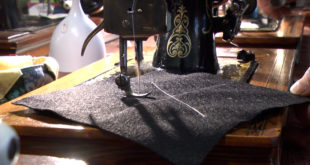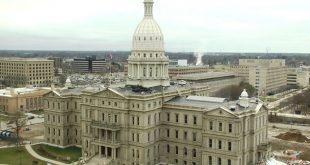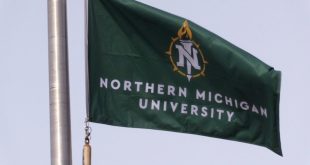After drilling four core holes, Highland Copper has interrupted its winter exploration on a 1-mile-square section of state-managed property at Porcupine Mountains Wilderness State Park due to unseasonably warm weather.
 A permit issued to the company by the Michigan Department of Natural Resources stipulates that exploration take place only on frozen ground, preferably when there is greater than a foot of snow cover.
A permit issued to the company by the Michigan Department of Natural Resources stipulates that exploration take place only on frozen ground, preferably when there is greater than a foot of snow cover.
These provisions are intended to prevent or reduce surface disturbance to park lands.
“Highland Copper hopes to resume its exploration of the minerals – which are not owned by the State of Michigan – should prolonged wintry conditions return soon to Gogebic County,” said John Pepin, Michigan Department of Natural Resources deputy public information officer. “The company plans to reassess the situation in a couple of weeks. If exploration is not resumed in March, the drilling program will be postponed until next winter.”
The DNR issued a use permit to Orvana Resources U.S. Corp. – a subsidiary of Highland Copper – to drill 12, 5-inch-diameter, core borings to evaluate copper minerals beneath the surface in a limited section of the park, situated west of the Presque Isle River and Gogebic County Road 519 (Section 5, T49N R45W, Wakefield Township, Gogebic County).
Use permits are issued commonly by the DNR for a variety of activities on state-managed land.
“Highland Copper has a legal right to access the minerals, so issuing this permit was not a discretionary matter,” Pepin said. “However, the DNR has worked closely and cooperatively with Highland Copper to minimize any impact on park land.”
Before deciding whether to mine copper, Highland Copper would need to finish the exploration, analyze its core samples and, depending on those results, conduct a feasibility study to determine whether mining would eventually be pursued.
Access to a potential ore body would occur from outside the park boundaries and the company would have to prove to the DEQ it would not damage land surface features at the park, including rivers and forests.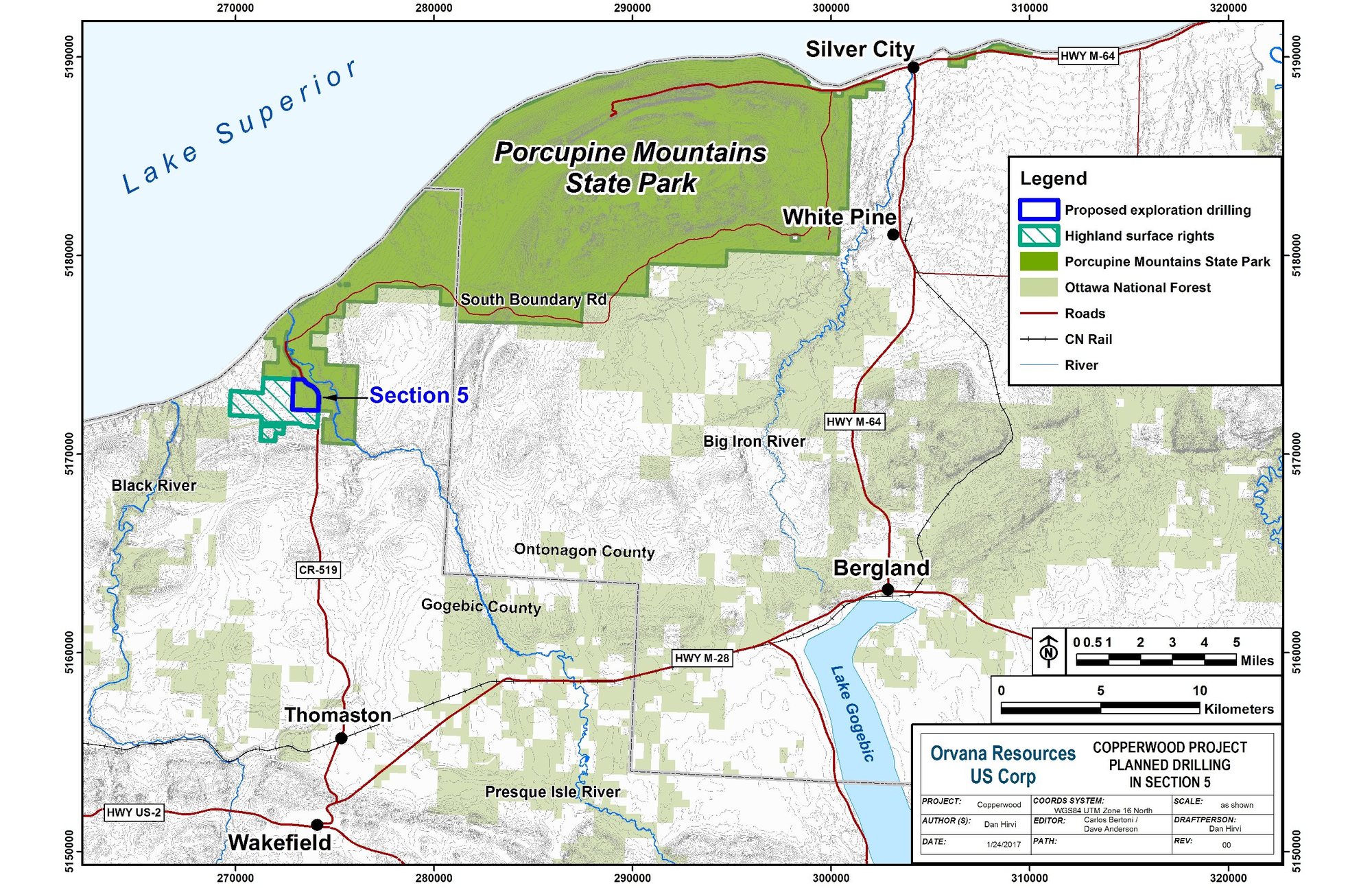
Should the company propose to mine copper in this area, public meetings and comment would take place under a separate Michigan Department of Environmental Quality regulatory process.
Each drilling site has a pad of roughly 25 feet by 60 feet. Under conditions of the permit, the company is using tracked rigs along existing roads and a railroad grade, where feasible, to limit disturbance to natural resources.
Boring depths will range from roughly 150 feet to 1,000 feet below the surface. Test holes are immediately filled with cement once drilling cores are removed.
Work began at the site Feb. 3, with the positioning of the first of two rigs on the site. Exploration was suspended early on the morning of Feb. 19, with the fourth hole completed.
Porcupine Mountains Wilderness State Park was established in 1945.
In 1948, the DNR purchased roughly 2,700 acres of land as part of the state park from the Keweenaw Land Association. Michigan law allows the owner of land to separate mineral rights from surface rights. Only the surface land was able to be purchased by the state at that time.
When mineral rights are severed from surface rights, the mineral estate is the dominant estate and the owner of the minerals has a right by law to “reasonable” use of the surface to access their minerals.
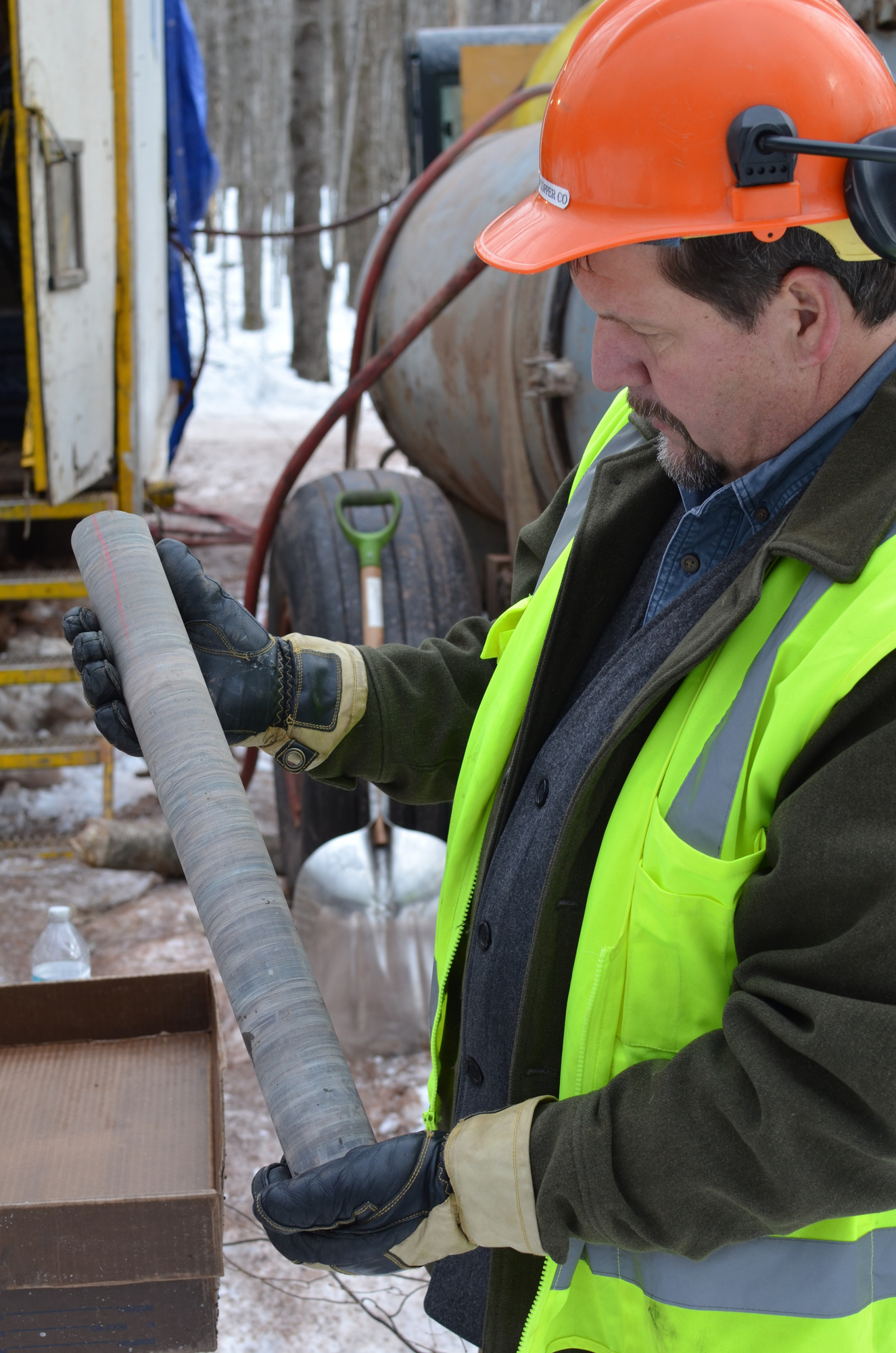 The mineral rights in this part of the park are severed from the surface rights and are being leased from the Keweenaw Land Association by Orvana Resources U.S. Corp.
The mineral rights in this part of the park are severed from the surface rights and are being leased from the Keweenaw Land Association by Orvana Resources U.S. Corp.
In addition to state law, the 1948 warranty deed from Keweenaw Land Association issued to the state of Michigan guaranteed Keweenaw Land Association the continued right to access the property for minerals exploration.
“This part of the park has previously been impacted by human activity,” Pepin said. “Exploratory drilling activity for copper occurred here during the 1950s, when 30 bore holes were drilled. Land west of Gypsy Creek was previously logged, and in the early-to-mid 1930s, R. Connor Co. installed a railway.”
The DNR and Highland Copper have made it a priority to minimize any potential impacts to the park during the company’s exploratory activities. Aside from drilling only on frozen ground, Highland Copper has committed to on-site monitoring by the DNR and DEQ.
Under the permit, the company has also implemented several additional safeguards, including avoiding the cutting trees where possible (where trees are damaged, the state will be reimbursed for those trees at current market value) and instituting additional planning and control measures at any drainage or stream crossings. No wetland filling or stream crossing installations are planned.
 Keweenaw Report Your Source for Local News and Sports
Keweenaw Report Your Source for Local News and Sports



